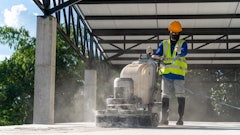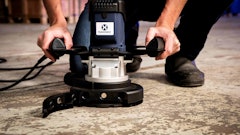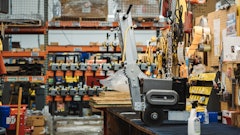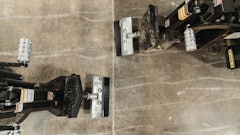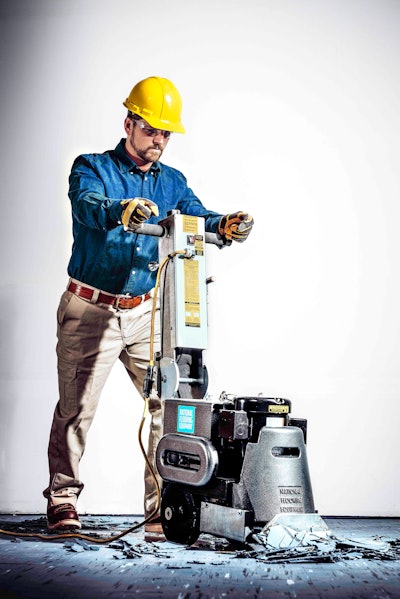
By Dave Bigham, director of global training initiatives for National Flooring Equipment
Maintaining and renovating historic buildings is one of the main ways to preserve important parts of our cultural history. These older buildings should be carefully and efficiently renovated to ensure they stay protected and can still be used today. Here, Dave Bigham, director of global training initiatives at National Flooring Equipment, explains how contractors can prepare for surface preparation work in listed buildings.
Older buildings may need floor renovations to restore a cultural heritage site, to adapt a building for a new purpose or to simply remodel a building that is outdated. No matter the reason, renovation of older buildings takes time and planning.
In most circumstances, older buildings will have had more renovation work done over time. The layout of the room and the materials used on the walls and the floors could have changed many times, impacting the condition of the substrate. Surface preparation may therefore be more time consuming and require more machinery and labor to be completed efficiently.
Preparation
The best way to ensure that surface preparation is not a long process when renovating an older building is to assess the site. Before starting the work, contractors should establish the size and scope of the building as well as accessibility. This will help them determine the size of machine that they need.
Contractors should also find out as much as they can about what is underneath the floor. The older the building, the more surface preparation steps required to get the finished result. Each step of the process might require a different piece of equipment, for example, to remove coverings or adhesives and to prepare the substrate underneath for a new covering. Knowing what machines to bring to the job early on can streamline preparation work and reduce downtime and lost productivity.
Logistics
The building itself can also determine what equipment is best for the application. Contractors should ask the facilities manager about power accessibility in the building because it can impact equipment choice. Some older buildings keep all generators in the basement, so using a battery-operated scraper would be better than an electric machine.
The age of the building may also determine its accessibility and machine choice. For example, older buildings may not have an elevator, so it would be impractical to bring a large, ride-on floor scraper to a job on a high level of a building. Knowing about elevators, door sizes and the logistics of the surface preparation ensures that a contractor can pick the correct equipment the first time and reduce unnecessary downtime onsite.
Dust Control
Older buildings also are often less spacious than newer buildings and are found in built up areas. Contractors working in these conditions should consider how to keep the jobsite clear during a renovation. They should plan how they are going to remove the covering, adhesive and dust debris from the site because leaving it there could negatively impact both productivity and health and safety.
Safety should always be a priority during a floor renovation, particularly in older buildings where work might take longer than expected. During surface preparation, contractors can be exposed to dangerous airborne particles such as silica, a chemical compound found in construction materials like concrete. Extended exposure to these particles can cause fatal illnesses such as silicosis.
Contractors should ensure that they bring equipment to the jobsite that will reduce exposure to silica dust and other harmful contaminants found in dust. Most floor removal equipment attaches to dust collectors to reduce the amount of dust in the atmosphere.
Managing Expectations
Keeping in close contact with the facility manager and building owner is important during any surface preparation job. Contractors working in older buildings should contact the facility manager before a renovation begins to understand what the expected final result is. Knowing the customer’s expectations and the knowledge of what has happened to the facility in the past can help contractors choose the right equipment.
Contractors should also speak to the facility managers to set their expectations about the time frame. Surface preparation in older buildings can take a long time because it is not always clear of how much work lies beneath the top floor covering. Understanding what the facility manager expects helps the contractor to know what time frame the job can be completed.
A floor renovation can help bring older buildings back to their former glory, either for historical preservation or to give the building a new purpose. With time, planning and communication, contractors can ensure that surface preparation work helps gives older buildings a longer lifespan.
Editor's Note: This articles was contributed by National Flooring Equipment.

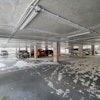
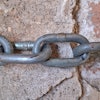
![Fcp Racatac Chair 10893876[1]](https://img.forconstructionpros.com/mindful/acbm/workspaces/default/uploads/2025/10/fcp-racatac-chair-108938761.10l0At5WXv.png?auto=format%2Ccompress&bg=fff&fill-color=fff&fit=fill&h=100&q=70&w=100)
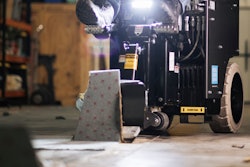
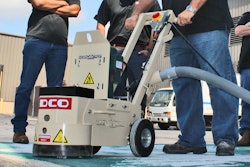
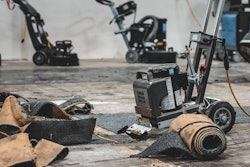
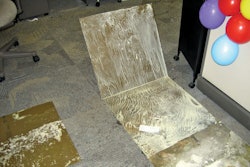



![Fcp Racatac Chair 10893876[1]](https://img.forconstructionpros.com/mindful/acbm/workspaces/default/uploads/2025/10/fcp-racatac-chair-108938761.10l0At5WXv.png?ar=16%3A9&auto=format%2Ccompress&bg=fff&fill-color=fff&fit=fill&h=135&q=70&w=240)

